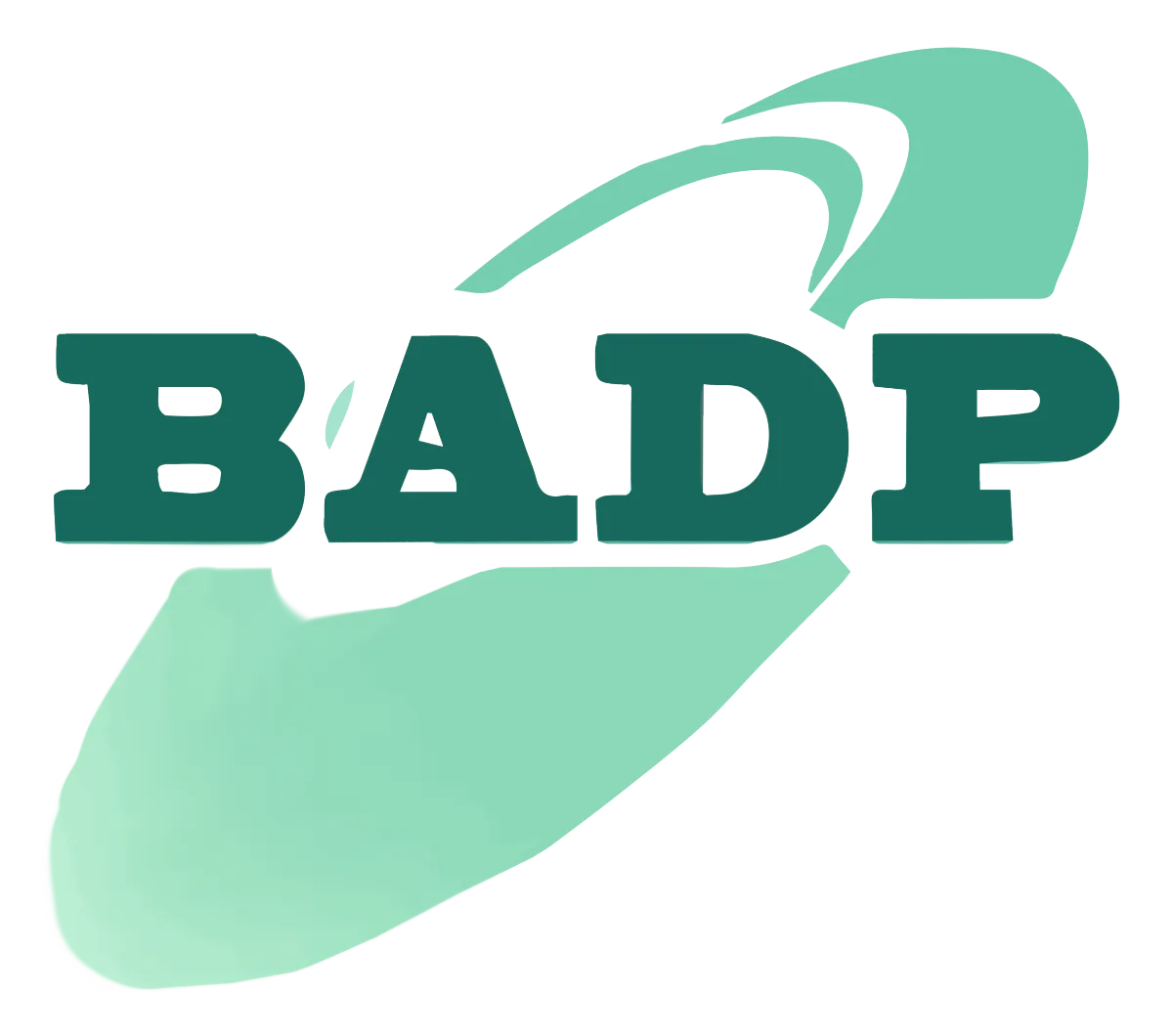FAQs
What is BADP?
BADP consists of organic and inorganic compounds that use a special small amount of additives to promote complete biodegradation of polymeric plastics, with no microplastics left at room temperature rather than in high temperature and high humidity industrial composting facility conditions.

How does BADP work?
BADP is an additive that uses microorganisms that decompose plastic and inductive substances that induce microorganisms that decompose plastic, cuts the polymer chain of polymer plastic, and makes it a low molecular weight, and eventually reduces it to natural substances such as water, carbon dioxide, and biomass.

Is BADP safe for food contact?
Yes, BADP has undergone toxicity tests such as seed germination rate tests and earthworm tests and is safe for use in food contact applications in accordance with FDA regulations.Lorem ipsum dolor sit amet, consectetur adipisicing elit. Autem dolore, alias, numquam enim ab voluptate id quam harum ducimus cupiditate similique quisquam et deserunt, recusandae.
How does BADP affect the recyclability of plastics?
BADP does not significantly affect the recyclability of plastic until biodegradation begins due to the operation of the inherent microbial enzymes and derivatives. Independent tests have shown that the plastic to which BADP is added is suitable for recycling.
Are BADP-treated plastics biodegradable in landfill?
Yes, BADP-treated plastics are designed to biodegrade in exposed aerobic and anaerobic environments such as landfills. Landfills generate small amounts of methane gas resources.
What happens to microorganisms after biodegradation?
PowerPoint Presentation During biodegradation, microorganisms cut and absorb entire polymer chains, which are then reduced to natural substances such as water, carbon dioxide, methane, and inorganic substances as end products.
Are there any harmful by-products?
No. There are no harmful by-products in BADP additives.
Can I use BADP for all plastics?
PowerPoint Presentation BADP can be used with almost any petroleum-based resin, so it can be applied to various types of plastic products such as PE/PP/PS/PET-Fiber.
Does BADP change the properties of plastic?
BADP-treated plastics do not significantly change their physical properties, such as tensile strength and impact strength. However, products that may have a slight decrease in transparency but require transparency are subject to a separate product.
Expiration date of BADP products
BADP is a product that can be applied according to the life cycle from the design stage according to the use and life of plastic pursued by the United Nations Environmental Organization.
Does BADP meet ASTM standards?
BADP-treated plastics may not meet ASTM6400 standards, which apply the certification criteria in hot/high humidity industrial composting facilities. BADP is composed of organic and inorganic compounds that promote complete biodegradation with no microplastics left at room temperature and meets the German/Austrian TUV Home Compostable (within 1 year) or Degradable in Soil (within 2 years) standards and the UK BSI PAS standards. However, since BADP begins to decompose after a certain period of outdoor exposure, TUV Home Compostable application may take a little longer than one year depending on the product.
How about FDA approval?
BADP has no problems with FDA regulations in food contact applications and is preparing for relevant certification.
BADP Effects in Marine Environments
BADP-treated products are biodegraded in a variety of environments, including marine environments. However, the rate of biodegradation can be slowed if the product is not fully exposed to an active microbial environment.
How can you completely confirm biodegradation?
Biodegradation has been recognized as a measure of biodegradation by comparing the ratio of carbon in experimental materials to carbon dioxide within 180 days to be composted in an industrial aerobic composting facility provided with thermophilic (temperature) conditions of 56 to 60°C in accordance with the criteria of ASTM D 5338, ISO 14855-1, which is called industrial composting. However, BADP has long been pointed out as green washing, which cannot be decomposed under normal natural conditions. BADP can prove the biodegradation rate based on TUV OK Home Compost (average 28°C) or ISO 17556 conditions and the UK BSI's PAS 9017 room temperature biodegradation standards, which are abandoned and exposed to natural environments.
What is the role of microbial community detection?
As the epidermis of plastic is destroyed, micro biodegradable enzymes in plastic are activated to cut the chain of polymers, while microbiological derivatives that decompose embedded plastic cluster large amounts of microorganisms on the plastic surface to effectively decompose plastic.
Environmental Impacts of BADP
BADP treated plastics are biodegraded in discarded exposure or at normal room temperature in landfills to remove environmental pollution from plastics. Usually, the inherent degradation enzyme of plastic is activated from 8°C and decomposes until there is no microplastic left and is reduced to eco-friendly.
Are the by-products of BADP biodegradation eco- friendly?
The biodegradation process is decomposed into water and carbon dioxide under aerobic atmospheric conditions, and under anaerobic landfill conditions, it produces environmentally friendly by-products such as methane and biomass and contributes positively to the ecosystem.
Biodegradation Stages in Landfills
This process is followed by an initial aerobic phase followed by several anaerobic steps (non-methane production, unstable methane production, and stable methane production) before being completely decomposed into soil.
PowerPoint Presentation Does BADP only work under certain conditions?
BADP is affected by natural exposure, especially ultraviolet rays, temperature, and humidity, and decomposition occurs at general natural temperatures. When the skin of a plastic is destroyed, the inherent plastic degradation enzyme is activated from 8°C and is also affected by acid rain or PH in the soil. When PLA is reformed with acidic soil during decomposition, BADP is reformed with weak alkali.
Biodegradation vs. Composting
Biodegradation refers to biodegradation by microorganisms and can occur in various environments. Composting is a specific type of biodegradation that occurs under controlled conditions, which is often mistaken for a unique form.
Compatibility with a wide range of plastics
BADP is versatile and can be used with almost any petroleum-based resin, making it applicable to a wide range of plastic types. In addition to the existing finished products, efforts are being made to expand the scope of use by utilizing basic technologies.
Performance at High Temperature
Even at high temperatures, BADP treated plastics maintain tensile strength and physical properties like standard plastics.Lorem ipsum dolor sit amet, consectetur adipisicing elit. Autem dolore, alias, numquam enim ab voluptate id quam harum ducimus cupiditate similique quisquam et deserunt, recusandae.
Reusability of BADP-treated plastics
Plastic recycling from BADP-treated products can be reused, but quality control is recommended to maintain proper material balance.
Recycling Test
It is more advantageous for physical recycling in chemical recycling and physical recycling, but it can be applied to chemical recycling without any problems. It can be collected separately and put into a recycling platform and used as a circulation resource. However, there is some deterioration of physical properties.
Test Standards and Compliance
BADP products undergo rigorous testing including ASTM D 5511 to ensure effective biodegradation under landfill conditions.
Understanding the Role of Microorganisms
PowerPoint Presentation BADP has separate aerobic and anaerobic enzymes and applies them depending on the product. Especially, synthetic fibers, etc., are mostly made of anaerobic enzymes, so decomposition does not occur in outdoor exposure, but smooth decomposition occurs in landfills.

©2023-2024 All Rights Reserved BADP Inc.
